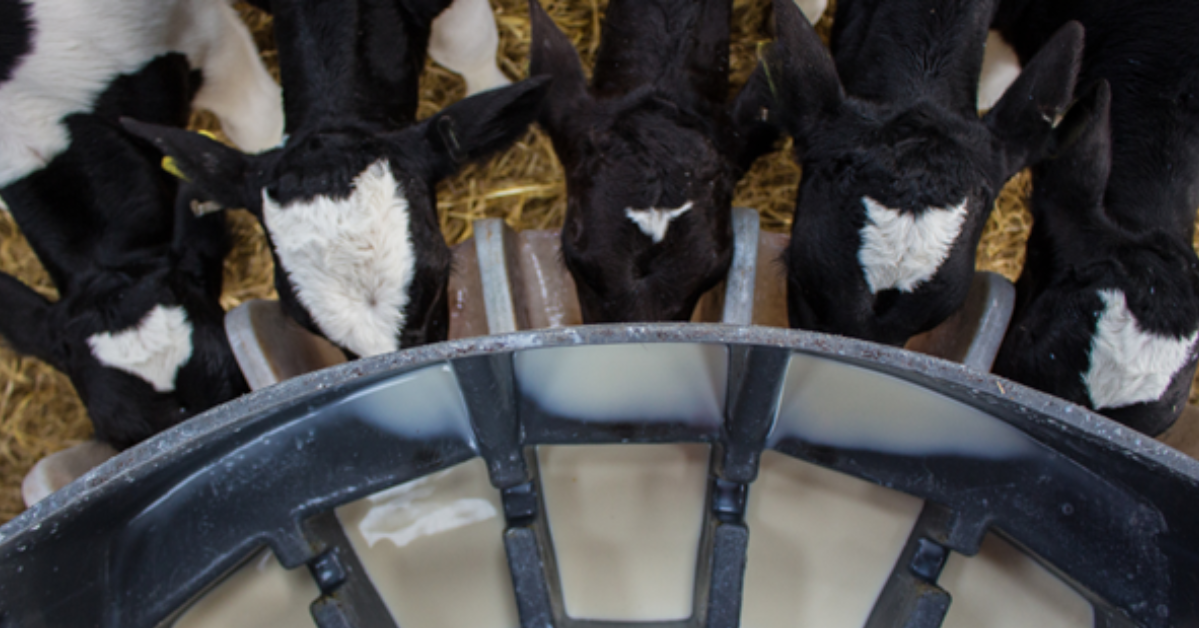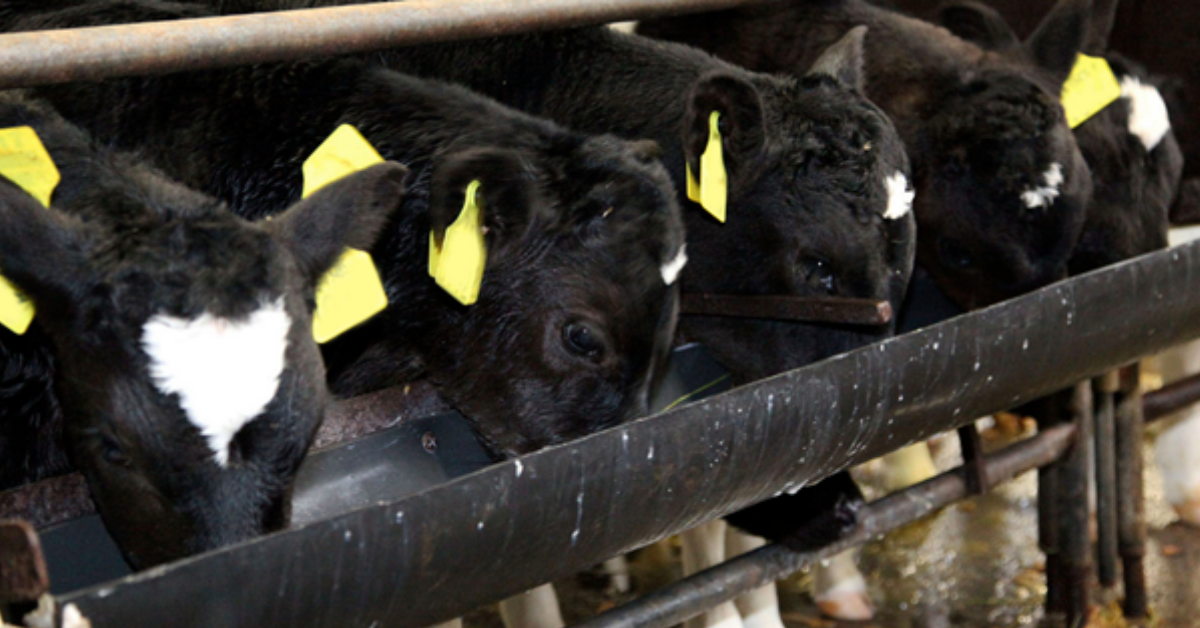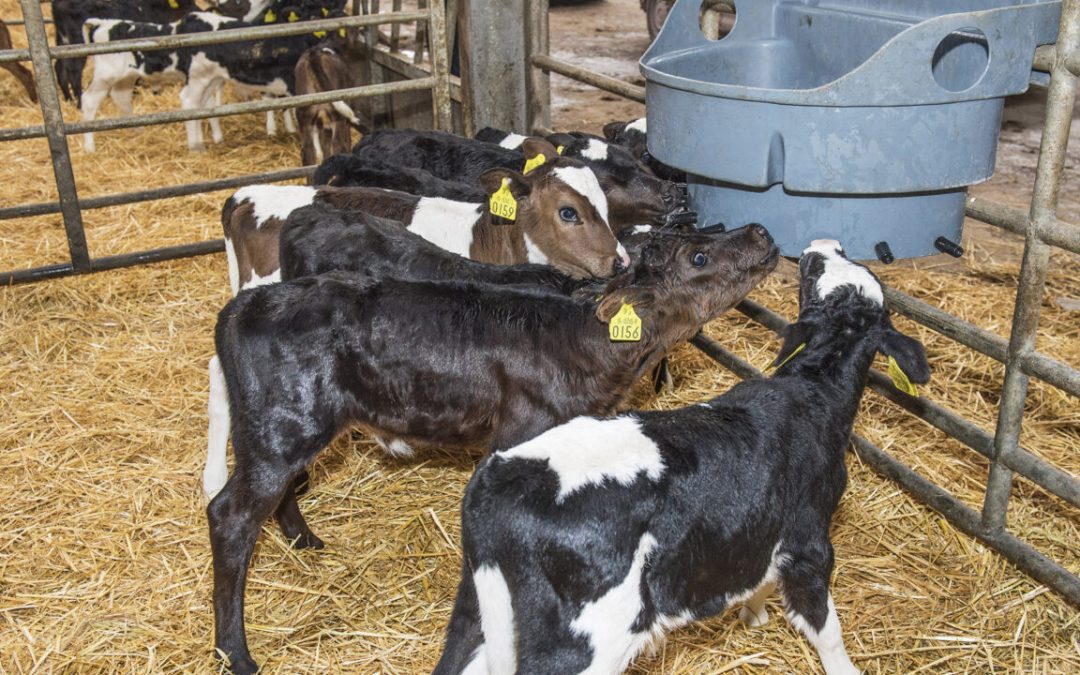The importance of the first few hours of a calf’s life and the long-term implications for the newborn animal cannot be underestimated. Our Head of Ruminant Nutrition, Maeve Regan has put together a list of our most frequently asked calf rearing questions and answers to help you set your calf up for lifetime success.
What should be considered when it comes to colostrum management?
The successful passive transfer of immunity from the dam to the calf via colostrum is the cornerstone of calf rearing. Research indicates that herds that achieve high levels of passive transfer (100%) result in significantly less mortality rates (4.95%) when compared to poor levels of passive transfer (70-75%), resulting in mortality rates of 9.31%.
High standards of hygiene are necessary when collecting, feeding, and storing colostrum, with research indicating that colostrum contaminated with dirt/bacteria results in reduced antibody absorption. A Teagasc Moorepark study involving 48 commercial farms highlighted that stomach tubes and bottles with teats had the greatest quantity of bacteria present. The pooling of colostrum on farms should also be avoided to reduce the risk of disease transfer within the herd, as well as dilution of high-quality colostrum.
What are the key elements to consider when choosing a milk replacer?
Firstly, it must contain a high level of dairy content. Dairy-derived protein sources include whey and skim powder. Research indicates that from 0-3 weeks of age, milk-derived proteins are the only proteins a calf can digest efficiently. Plant-based ingredients/vegetable sources of protein are less digestible to the calf and therefore reduce the nutritional quality of the milk powder. Higher levels of fibre in a milk replacer, typically indicate a greater percentage of plant protein. This year where margins are tight, high vegetable-based milk replacers may appear ‘good value’, however, comparative average daily gains to whole milk shouldn’t be expected in the early weeks of life.
Our Vitalac Red and Blue Calf Milk Replacers contain a 89-90% dairy content, offering a well-balanced level of highly digestible fat and protein, using carefully selected high quality dairy ingredients. These quality ingredients are further enhanced using advanced techniques such as Low Heat Spray Cooling Technology so that the ingredients don’t denature during the manufacturing process.
What concentration of milk replacer should I be offering calves?
When it comes to milk replacer, we are trying to replicate in the calf’s diet the role of good quality whole milk (3.4% Protein + 4.3% Butterfat + 4.8% Lactose = 12.5% Milk Solids). Calf milk replacer is therefore generally fed at 12.5%. This equates to 125g of powder being dissolved into 875ml of water, to make up 1 litre of milk. When 6 litres of milk are being offered to the calf, 750g of powder per calf per day is being used. For accelerated feeding programmes, concentrations can be increased to 15%.

Does the environment calves are reared in affect their nutritional needs?
Having calves warm, comfortable, and feeding well is what we should be aiming for. Your calves will pay you back for getting this right. A cold environment will result in vital energy consumed by the calf being burnt to keep itself warm. In cold sheds, try to create a warmer micro-climate for calves, such as dropping a canopy area against the back wall, or using large square bales to protect calves from draughty areas. When looking at the calf pen, there should be an even distribution of calves across the lying area. Where calves are often lying bunched against the back wall or corner, the shed may be too cold.
A calf spends approximately 80% of its time lying down, therefore it’s essential to provide a deep, warm, dry bed. When giving the shed a bedding score, a good rule of thumb is to place your hand firmly onto the bedding. The straw around your hand should be up to your elbow. The base of the bed also needs to be dry – kneel on the bedding and when you stand up your knees should be dry.
When it comes to nutrition, for every degree below 10°C, an extra 2% milk replacer can be offered to compensate.
Apart from milk replacer, what other sources of nutrition should the calf have in its diet?
Milk should be seen as a feed rather than as a drink. Water is an often-forgotten source of nutrition in calf rearing and is a cheap ingredient for hydration and rumen development. Fresh, clean water must be always available to calves. Where water is limited, this will restrict dry matter intakes. Dirty/contaminated water sources can also be linked to bloat.
Fresh clean straw is also another critical component in early rumen development and must be offered ad-lib as a source of fibre in the diet. Straw is preferable to hay. Silage/haylage should never be offered to calves pre-weaning.
What sort of ration/nut should be offered to calves during the rearing period?
Starter rations should be introduced from 3 days of age and will play a vital role in rumen development and early weaning. They should be sweet-smelling, molassed and contain cooked ingredients – these 3 factors will help aid intakes and digestion. Once intakes start to increase (normally greater than 250g), a typical 18% crude protein calf ration or nut can be offered to calves.
Once calves are turned out to grass, or have grass in the diet, a 16% crude protein concentrate will suffice.

When should I consider weaning my calves and how long should they be on milk?
A 70-day calf rearing period is the norm on farm. However, to have a uniform group of calves, weaning should ideally take place on a weight basis, coupled with concentrate intakes rather than an age basis. The target when weaning calves is to have doubled in live weight from birth to weaning (40–80kg in 10 weeks). However, weaning on a weight basis alone can create a false sense of security in terms of how ready calves are for the next stage of nutrition.
The success of the weaning process and the weeks thereafter will hinge around how the rumen has developed over the first weeks of the calf-rearing period. Weaning should never be considered until calves are consuming at least 1.5kg concentrate/hd/day in grouped pens – signalling that the calves’ dry matter intakes can cope with the transition to a 100% solid diet.
Further Advice
For further calf rearing advice or to learn more about our milk replacer range or post-calving minerals, contact your local Agritech Sales Advisor.


